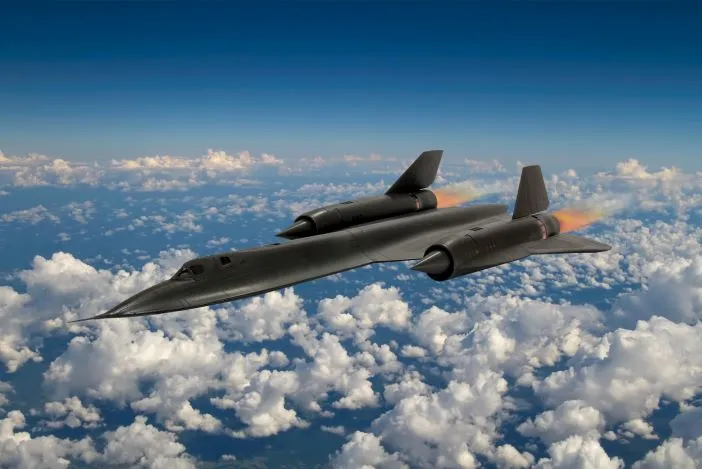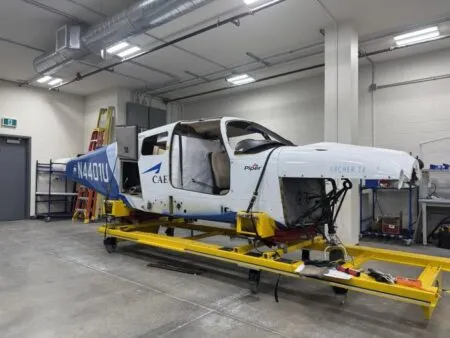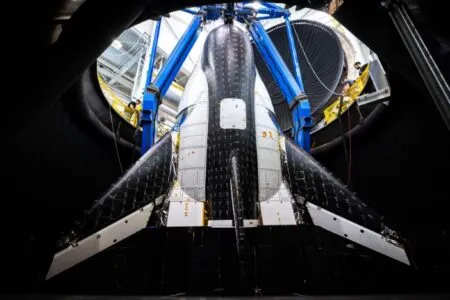by Eric Tegler
Aurora Flight Sciences in the USA plans to fly an unmanned airplane that uses only bursts of air to maneuver in 2025. The technique is part of a broader approach to flight control called Active Flow Control which dispenses with traditional moving aerodynamic surfaces. AFC could yield meaningful advantages in future aircraft from greater efficiency to improved stealth.
But flying a headline-making fully Active Flow Control (AFC)-controlled “X-plane” isn’t really the point. For the Defense Advanced Research Projects Agency (DARPA) and its aerospace industry partners on the project, adding AFC to the aircraft designer’s toolbox is.
A long-legged bird
The DARPA program for which Aurora plans to build and fly its AFC-controlled X plane is called CRANE (Control of Revolutionary Aircraft with Novel Effectors). In general terms, conventional airplanes change or maintain direction in three dimensions by changing the airflow around them using hinged surfaces, a form of flow control. Instead, AFC uses timed and metered pulses to effect airflow changes. These disruptions change lift and drag at a specific location to initiate pitch, roll, or yaw movements. The effectors actuate flow changes and are typically pneumatic or electric.
One technique puffs or streams air extracted from a jet engine through 1-4mm wide holes in the relevant parts of an aircraft’s skin. Conversely, air can be sucked out of the flow. Such pneumatic blowing and suction can create or shape aerodynamic wakes that aerodynamicists describe as virtual control surfaces.
If an aircraft’s wings have rounded trailing edges, air will follow their curvature – a tendency known as the Coanda Effect. Blow air over the top of a rounded trailing edge and you create a downward wake. Blow air from below and you create an upward wake. The wakes can change the pitch of an aircraft, raising or lowering its nose just as flaps and elevators do. Left or right yaw motion, produced by rudders on conventional aircraft, is harder to create with pneumatic AFC, but it can be done by vectoring the thrust of an engine, essentially blowing or pulling exhaust gases to one side or the other.
These active effects can be achieved using arrays of effectors including fluidic oscillators shaped as slots, trapezoids or other configurations or sweeping jets which inject air into the flow at various locations on an aircraft. Such effectors have been used on drones flown by Lockheed Martin Skunk Works, called ICE (Innovative Control Effectors) and BAE Systems’ Magma which blew air through slots in the trailing edges of their wings to maneuver.
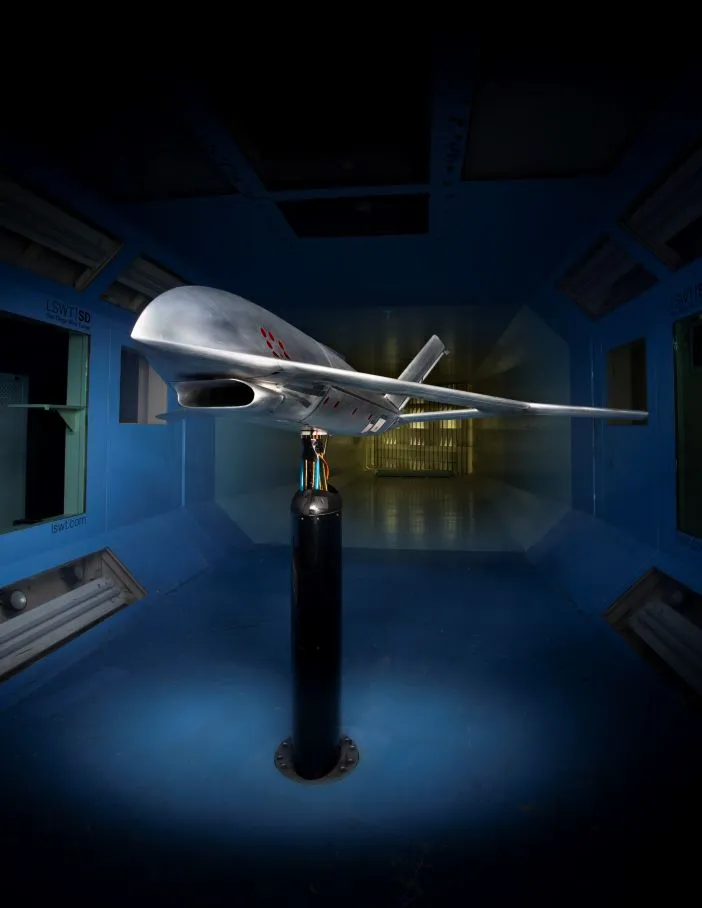
A 757 ecoDemonstrator flown by a Boeing-NASA team in 2015 is the only full-scale aircraft to have partially integrated AFC control thus far. It used sweeping jets to blow compressed air in arcs across the airliner’s vertical tail in an attempt to improve aerodynamic efficiency.
Electric AFC techniques use arrays of electrodes to discharge aerodynamic or electrical pulses to locally alter airflow. Effectors called synthetic jets – millimeter-wide openings in the aircraft surface that open into centimeter-wide cavities with diaphragms – rely on rapid voltage pulses to make diaphragms oscillate inward or outward, creating airflow sucking or blowing effects, much like a human lung.
Electrically powered plasma actuators discharge pulses of electricity into the air through electrodes. The heat from the electricity turns the air into plasma, thermally altering flow vectors. All of these techniques have been researched through decades of AFC experiments in laboratories, wind tunnels and small-scale aircraft.
Many of the AFC tools that DARPA is seeking to highlight with CRANE will be exemplified in the full-scale X-plane that Aurora Flight Sciences will build.
The I believe button
“The fact that we’re actually going to fly with AFC is a big step forward,” DARPA’s CRANE program manager, Richard Wlezien, says. Wleizen has worked on AFC concepts for nearly 40 years, including in a previous DARPA program, but CRANE represents something new he affirms.
CRANE will be the first full-scale experimental active flow control airplane and the first to fully integrate AFC into its flight control system.
“Full-scale” was determined by DARPA as a 7,000 lbs (3,175 kg) aircraft with a 30ft (9.1m) wingspan. The wingspan is roughly equivalent to that of an F-16, but the similarity is merely coincidental Wleizen explains.
DARPA sought dimensions that provide room enough for an engine that can propel the AFC X-plane to speeds of up to Mach 0.67 (around 500mph/800km/h) and demonstrate airplane-representative Reynolds numbers – dimensionless quantities that help predict fluid flow patterns in different situations. AFC has been done at model scale Wleizen says, “But it behaves differently at a lower Reynolds number than it does at full scale.”
According to Aurora’s CRANE program manager, Kevin Uleck, the X-plane’s realistic – if not large – size and Reynolds number characteristics click the “I believe” button that DARPA seeks to hit, inspiring others to take up and apply the concepts it investigates. He adds that the scale of the experimental aircraft will yield test results widely applicable to a “5,000 lbs, 50,000 lbs, or 100,000 lbs aircraft.”
Aurora Flight Sciences has built 30 X-planes during its 30 years of existence. The company’s in-house experience is bolstered by parent company Boeing, whose flap-shoulder blowing AFC work, including on the ecoDemonstrator it will lean on.
“We are going to leverage the Boeing enterprise for CRANE, combining it with Aurora’s X-plane know-how,” Uleck explains.
Uleck came to his position with no background in AFC but says, “I always asked, how does the Boeing effector approach compare with other AFC approaches like trailing-edge Coanda blowing, and that spawned this idea of making our X-plane modular so that we can evaluate and flight test different AFC effectors.”
A modular X-plane
Widely circulated artwork showing Aurora’s AFC X-plane design shows a co-planar, joined-wing design that does not definitively indicate what an AFC-controlled aircraft will look like.
DARPA’s Richard Wleizen merely calls it “a vehicle that’s been designed such that it can be controlled by AFC.” Kevin Uleck says the design looks the way it does in part because AFC efficacy “is a function of aircraft planform,” and that there could be several AFC planforms.
“We have tried to conceive a demonstrator that can accommodate all types of active flow control in a diverse range of aircraft planforms and uses for AFC, whether for high-lift, flight control or other objectives,” says Aurora’s government programs lead, Graham Drozeski.
The X-plane will have three levels of configurability. The first arises from its co-planar shape which incorporates different wing sweep angles within one airframe. The forward wing section has a 55˚ sweep, the trailing outer wing has a 30˚ sweep, and the aft empennage-wing has a 20˚ forward-sweep. The design’s vertical tails have yet another sweep angle.
“Those four different flying surfaces all represent different aero elements that we characterized during the tools-design process and we built them into the X plane,” Uleck says.
Richard Wleizen explains that the range of different wing sweeps that Aurora’s design can simultaneously accommodate was one of the factors that led DARPA to select it over designs from other CRANE Phase 1 competitors Lockheed Martin and BAE Systems. Along with wing aspect ratio, wing sweep has a significant impact on the effectiveness of AFC.
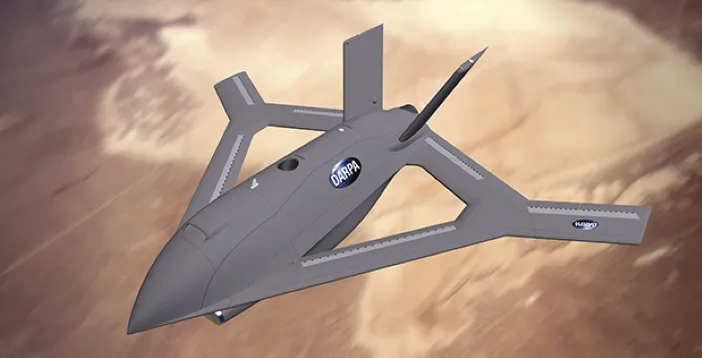
by Aurora
Wleizen points out that most previous AFC research was done with models and subscale drones that employed un-swept wings. The opportunity to evaluate different AFC techniques across different sweeps within a single test flight will yield important insights he affirms.
In addition, the entire outboard wing section can be interchanged. An alternative section can be built independently by a third party and then brought to the airplane for flight testing with different AFC effector strategies.
On a second level, Aurora’s design also allows for an array of 14 effectors which can be changed from one type to another – fluidic oscillators, steady jets and zero-net mass-flux actuators collectively or individually. A third level of configurability comes from the design’s ability to incorporate coanda blowing across any of its trailing edges.
The X-plane Aurora is building for DARPA will focus on control via pneumatic AFC techniques but its inherent flexibility will allow for its use as a test platform beyond CRANE.
“Life after DARPA” is something Wleizen says the Agency fully expects for the X-plane. DARPA is actively working on plans to turn the aircraft over to other US government organizations once CRANE is complete. These may evaluate other AFC approaches and may even integrate non-Aurora-designed arrays, effectors and outer wings.
Wleizen adds that DARPA has invested in work done by the Georgia Tech Research Corporation in developing a digital AFC design tool which is founded on a large data set that takes in planform and actuation methods generated within CRANE and outside. As with the X-plane itself, the Agency is looking to transition this tool to other government entities so that it may come into common use.
“We are not just going to provide data,” Wleizen explains, “we are going to provide a design tool that can be used for other vehicles.”
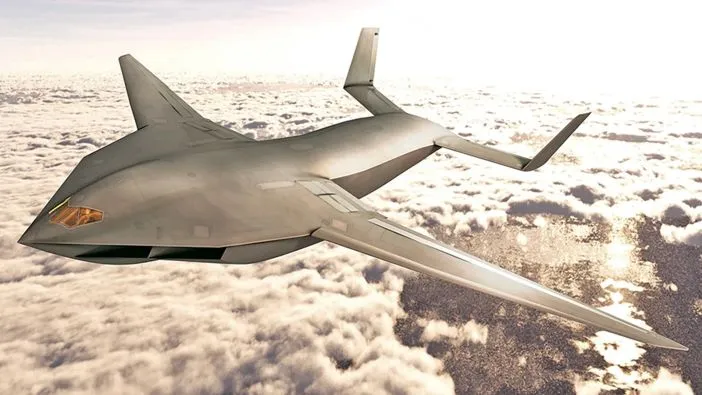
Creating a tool
The scope of CRANE has purposeful limits. Aurora’s X-plane will still have basic conventional controls for takeoff and landing. It will switch to AFC control once aloft in cruise. It is not intended to be a highly maneuverable vehicle, but rather a platform to prove AFC effectiveness with a view to potential aerodynamic efficiency and high-lift benefits.
“We’re just looking at the controllability of the aircraft,” Wleizen stresses.
This contrasts with the recent demonstration of a tail-less AFC-controlled small drone at the Illinois Institute of Technology, where researchers demonstrated a capability to maneuver at high angles of attack using trailing-edge coanda blowing.
The program’s results are intriguing, but may not necessarily translate to full-scale AFC-controlled aircraft which would have significantly different Reynolds numbers.
Aurora’s X-plane is really meant to “deliver tools to DARPA” and the broader aerospace sector says Drozeski. “The true output of the program is not just that our aircraft flies, but that it puts a stake in the ground that proves the tools are right.”
Drozeski and Uleck agree that AFC tools and techniques will find their way onto aircraft, conventional or otherwise. This will initially be to achieve single objectives such as stealth, lift performance and energy efficiency, rather than a fully AFC-controlled aircraft.
Neither denies that such integration could be seen on aircraft that Boeing is developing including the Transonic Truss-Braced Wing aircraft it is developing with NASA or the blended wing-body concepts it is developing for strategic airlifter and aerial refueling tanker aircraft. In the future, a range of aircraft of different configurations from advanced air mobility eVTOLs to sixth-generation fighters could theoretically benefit from an augmenting AFC capability for specific flight and mission phases.
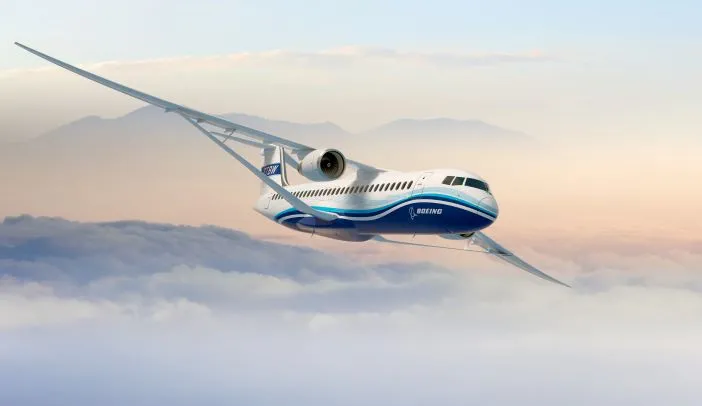
(Photo: Boeing)
“If we’re successful,” Drozeski says, “we hope the data will be used by an aircraft designer who is designing a new aerial refueling aircraft, unmanned or eVTOL aircraft. He uses the data and realizes, ‘I could have a smaller tail, I could have a slower stall speed, a higher bring-back weight to an aircraft carrier.”
AFC is an old concept and we are only now beginning to realize its potential as a conditions-based control mechanism or as a stand-alone vehicle control methodology. The DARPA and Aurora X-plane is an important next step on the path to making AFC another instrument in the aircraft designer’s toolbox.


